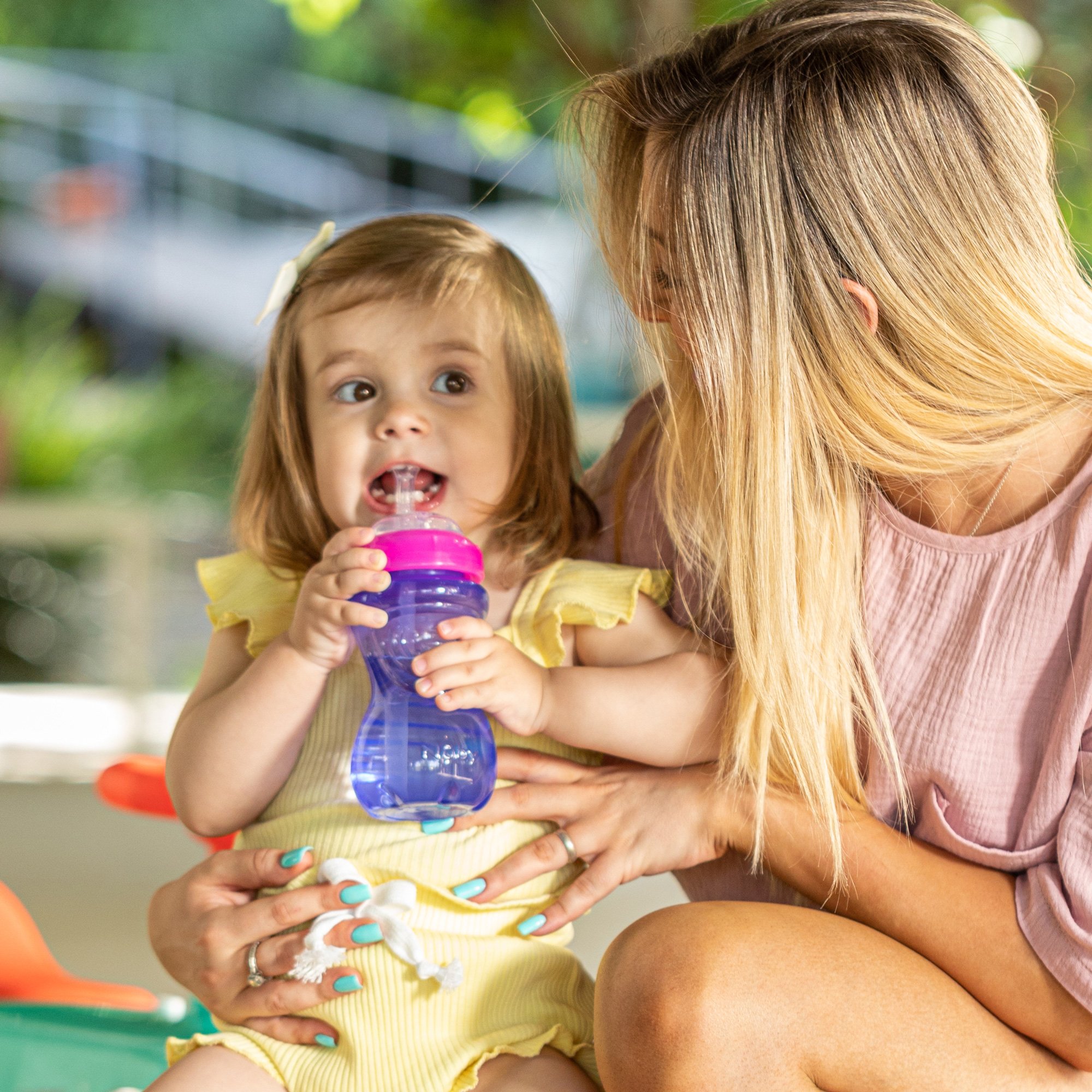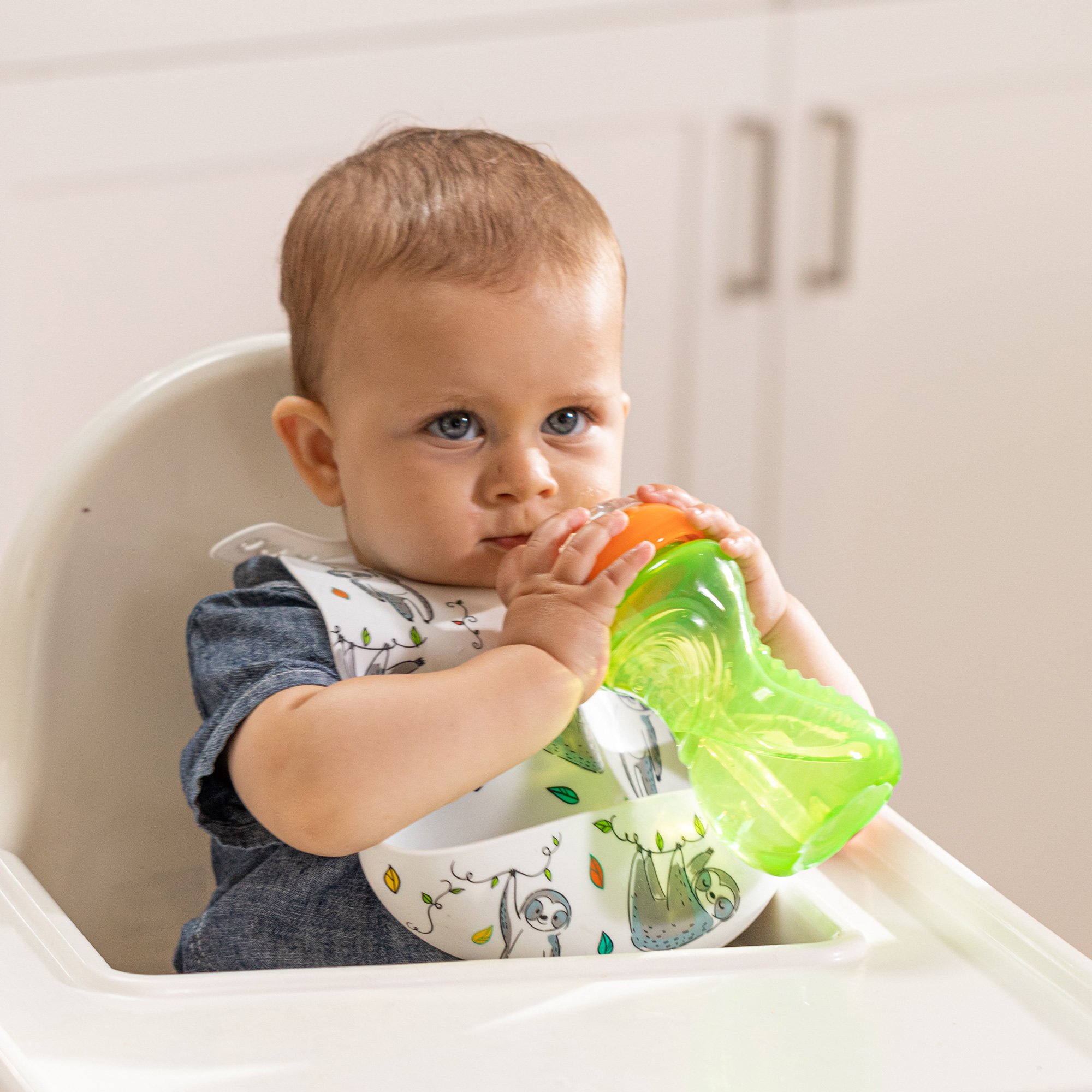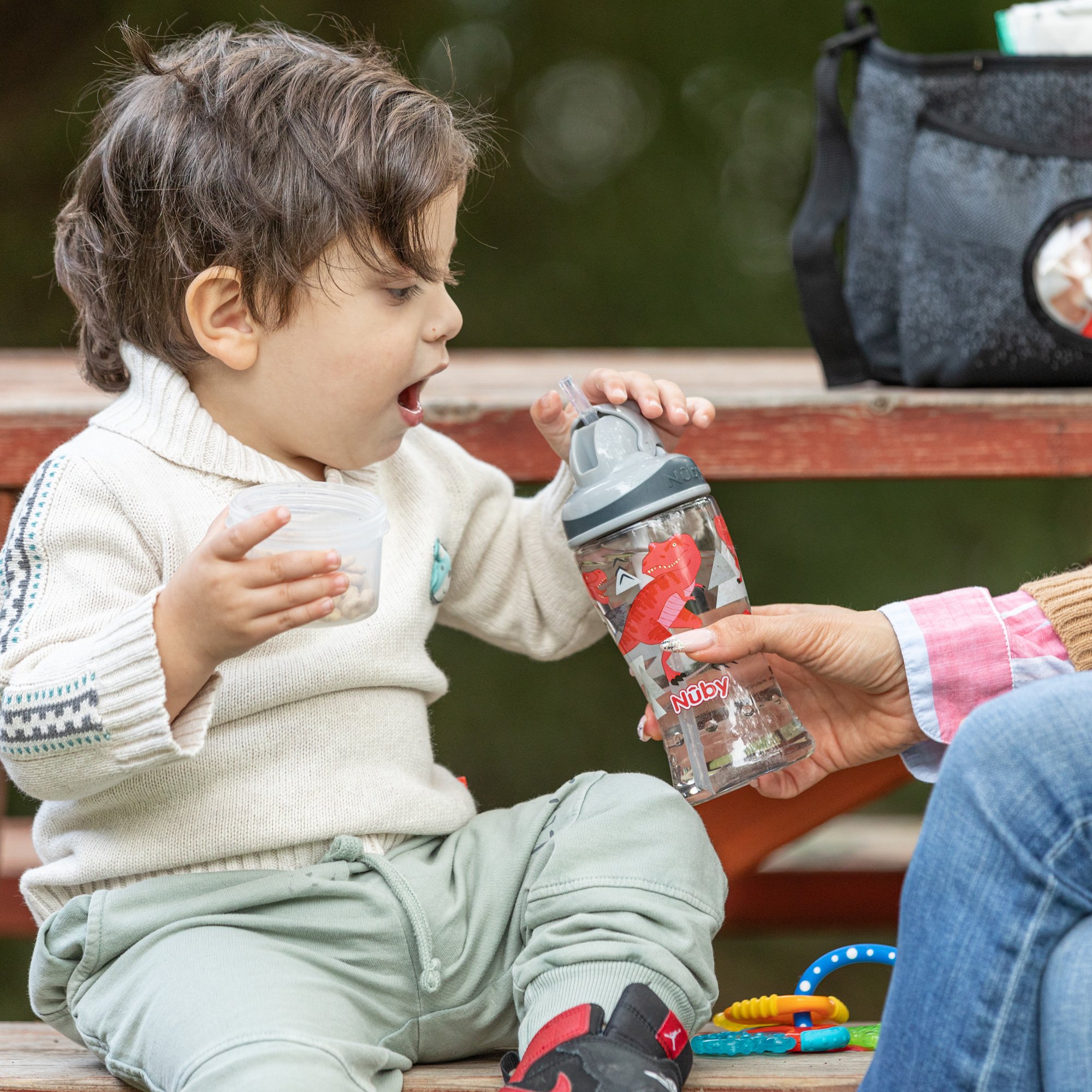When your child is a master at the sippy cup but still not quite ready to move up to a big kid open cup, learning to drink from a straw can be a useful bridge. Straw cups are a step up from the sippy cup and an important milestone for your child.
Not only will straw cups improve the muscles in your child's mouth and tongue, plus protect teeth alignment, but they also help with speech development and swallowing skills, which are needed for eating and drinking later on in life.
If you're wondering how to teach your baby to drink from a straw, stay tuned because we've got all the tips and tricks right here.

What Age Can Babies Use a Straw?
Babies usually transition to using a straw between 6 and 12 months, based on their developmental milestones and readiness and start learning to drink from a straw as early as 9 months old. This transition occurs while introducing solid foods and moving away from breastfeeding or bottle feeding. Keep in mind that every baby develops at their own pace, so timing can vary.
When introducing a straw to a baby, it’s crucial to select a straw that is appropriate for their age and developmental stage - and always ensure the baby is supervised. There are a number of options available, such as sippy cups with built-in straws or standalone straw cups designed for infants. These types of sippy cups usually feature soft or flexible straws, making it easier for babies to drink out of.

How to Teach Your Baby to Drink from a Straw
If your child has been using a sippy cup for a while, they might surprise you and be able to grasp using a straw cup right away. If they need a little helping hand, though, here are some tips to try below:
- Start small by filling the cup with a little bit of water. Learning how to use a straw cup can get messy, so by giving them a small amount at a time, you can reduce the mess and build up as they grow more confident.
- For babies struggling, try this trick: put the straw in their mouth, dip the end of it into a thicker puree,which is often easier for babies to control with their mouths and swallow, and offer it to your child like a spoon. This will help their mouths adjust to the shape of the straw. Leave the straw in their mouth for a couple of seconds until they start to suck. When they've learned how to get something from the straw, you can then switch to thinner liquids, like water.
- Fill a straw with a liquid and put your finger over one end to hold it in. Then, with the other end of the straw, slowly drip the liquid into their mouth. Gradually release your finger slower, so your child has to work a bit harder and suck to get what they want from the straw.
These tips can be repeated several times throughout the day to help teach them how to drink from a straw. If they seem uninterested or refuse to even try, just try again the next day. Eventually, they'll understand what they need to do, and drinking from a straw will become second nature.
Are Straw Cups Better for Children's Teeth?
While sippy cups aren't bad for children's teeth, they can potentially lead to some oral health issues with prolonged use, which is why they are only recommended as temporary cups before moving on to either a straw cup or an open cup.
Straw cups encourage your child to develop more advanced sucking and swallowing skills as it's a bit more work for them to use than a sippy cup. This also helps to improve the strength of your child's mouth muscles, which is needed for speech development.

Best Straw Cups
Wondering which type of straw cup to get? Here's what to look out for:
- Choose a straw cup with a soft and flexible silicone straw rather than a hard plastic straw, as these are gentler on your child's teeth and gums.
- Leak-proof straw cups allow your child to learn how to use a straw without the mess!
- Look for an ergonomically designed straw cup that makes it easy for your child to hold with both hands.
- Straw cups with easily removable parts will make cleaning the cup much more efficient.
- A slightly thicker straw with a wider spout will be easier for your child to learn how to use.
Take a look at our collection of straw cups and bottles, all designed with your child's best interest at heart.



